The average cost of Tympanoplasty in Greece starts from GRD 2300 (USD 2500)
Treatment cost
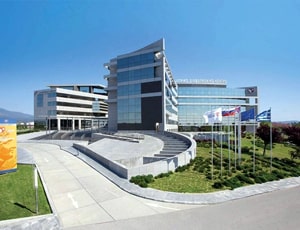
Apart from in-detail treatment procedures available, Medical Inter-Balkan Thessaloniki located in Thessaloniki, Greece has a wide variety of facilities available for International Patients. Some of the facilities which are provided by them are Accommodation, Airport Transfer, Choice of Meals, Interpreter, SIM, TV inside room. Also listed below are some of the most prominent infrastructural details:

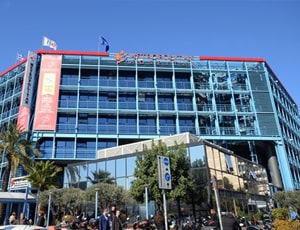
Apart from in-detail treatment procedures available, Metropolitan Hospital located in Pireas, Greece has a wide variety of facilities available for International Patients. Some of the facilities which are provided by them are Accommodation, Airport Transfer, Choice of Meals, Interpreter, SIM, TV inside room. Also listed below are some of the most prominent infrastructural details:
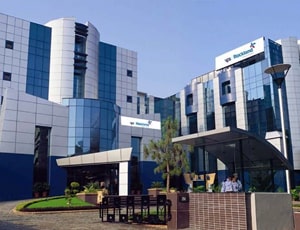
Supported by the first class staff, Medeor Hospital is dedicated to providing the latest in medical advances. The hospital’s professional expertise is regarded as one of the finest in India. The centre provides acute specialist services and aims at delivering top-quality medical and patient care.
Infrastructure & Facilities:
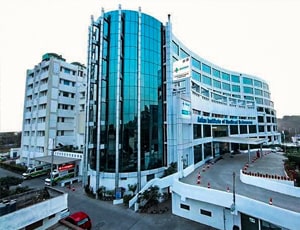
The cost for Tympanoplasty ranges from USD 3120 - 3620 in Asian Institute of Medical Sciences
Asian Institute of Medical Sciences located in Faridabad, India is accredited by NABH, NABL. Also listed below are some of the most prominent infrastructural details:
DOCTORS IN 14 SPECIALITIES
FACILITIES & AMENITIES
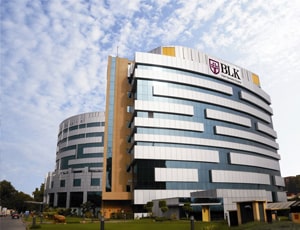
The cost for Tympanoplasty ranges from USD 3300 - 3610 in BLK-Max Super Speciality Hospital
BLK-Max Super Speciality Hospital located in New Delhi, India is accredited by NABL. Also listed below are some of the most prominent infrastructural details:
DOCTORS IN 15 SPECIALITIES
FACILITIES & AMENITIES
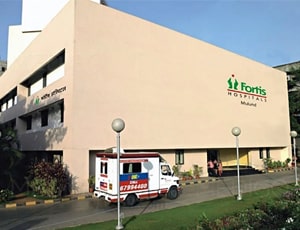
The cost for Tympanoplasty ranges from USD 3000 - 3650 in Fortis Hospital, Mulund
Fortis Hospital, Mulund located in Mumbai, India is accredited by JCI, NABH. Also listed below are some of the most prominent infrastructural details:
DOCTORS IN 13 SPECIALITIES
FACILITIES & AMENITIES
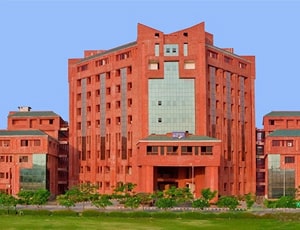
The cost for Tympanoplasty ranges from USD 3010 - 3520 in Sharda Hospital
Sharda Hospital located in Greater Noida, India is accredited by ISO, NABH. Also listed below are some of the most prominent infrastructural details:
DOCTORS IN 12 SPECIALITIES
FACILITIES & AMENITIES
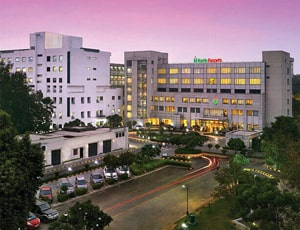
The cost for Tympanoplasty ranges from USD 3280 - 3700 in Fortis Escorts Heart Institute, Okhla
Fortis Escorts Heart Institute, Okhla located in New Delhi, India is accredited by ISO, NABH. Also listed below are some of the most prominent infrastructural details:
DOCTORS IN 11 SPECIALITIES
FACILITIES & AMENITIES
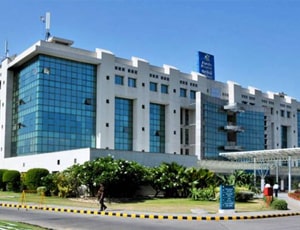
Apollo Hospital International Limited located in Ahmedabad, India is accredited by JCI, NABH. Also listed below are some of the most prominent infrastructural details:
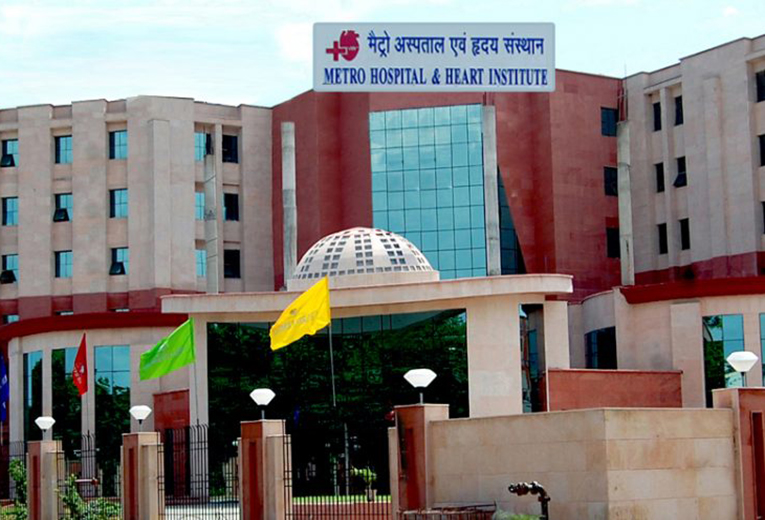
The cost for Tympanoplasty ranges from USD 3130 - 3760 in Metro Hospital
Metro Hospital located in Noida, India is accredited by ISO, NABH, NABL. Also listed below are some of the most prominent infrastructural details:
DOCTORS IN 12 SPECIALITIES
FACILITIES & AMENITIES
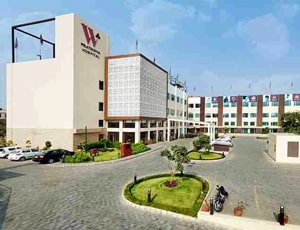
The cost for Tympanoplasty ranges from USD 3060 - 3690 in W Pratiksha Hospital
Apart from in-detail treatment procedures available, W Pratiksha Hospital located in Gurugram, India has a wide variety of facilities available for International Patients. Some of the facilities which are provided by them are Accommodation, Airport Transfer, Choice of Meals, Interpreter, SIM, TV inside room. Also listed below are some of the most prominent infrastructural details:
DOCTORS IN 12 SPECIALITIES
FACILITIES & AMENITIES

Dr. Rose Private Hospital located in Budapest, Hungary is accredited by JCI. Also listed below are some of the most prominent infrastructural details:
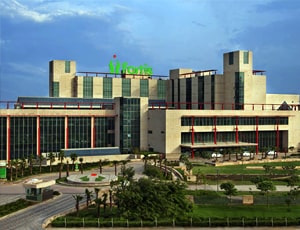
The cost for Tympanoplasty ranges from USD 3130 - 3590 in Fortis Memorial Research Institute
Fortis Memorial Research Institute located in Gurugram, India is accredited by JCI, NABH. Also listed below are some of the most prominent infrastructural details:
DOCTORS IN 14 SPECIALITIES
FACILITIES & AMENITIES

The cost for Tympanoplasty ranges from USD 3020 - 3820 in Manipal Hospital, Gurugram
Manipal Hospital located in Gurugram, India is accredited by NABH. Also listed below are some of the most prominent infrastructural details:
DOCTORS IN 13 SPECIALITIES
FACILITIES & AMENITIES
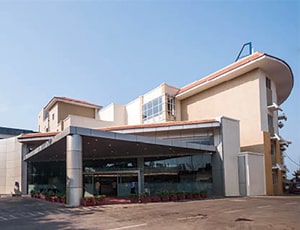
The cost for Tympanoplasty ranges from USD 3160 - 3640 in Manipal Hospitals Goa, Dona Paula
Manipal Hospitals Goa, Dona Paula located in Panjim, India is accredited by NABH. Also listed below are some of the most prominent infrastructural details:
DOCTORS IN 13 SPECIALITIES
FACILITIES & AMENITIES
People from all age groups can be affected by ear disorders and hearing impairment problems. In the United States, a survey revealed that under the age of 65, over 60 percent of the population suffers from problems related to hearing loss. However, almost 25 percent of people aged above 65 experience a significant loss of hearing. Thankfully, different types of ENT surgeries are available to treat problems related to the ear.
Most often, people are diagnosed with problems related to the eardrum, or tympanum, and the infection in the cells of the mastoid bone. The tympanum is the thin membranous structure present between the outer and the middle ear. It vibrates when sound waves hit on it and this enables us to hear.
A repair surgery called tympanoplasty is required to treat a perforation or hole in the eardrum. The middle ear is sterile but due to rupture of the eardrum, an infection can also occur. It may also be required for repairing of tiny bones present behind the eardrum or ossicles in the mastoid bone. This repair is known as mastoidectomy.
Tympanoplasty and mastoidectomy are therefore conducted together in many cases. This procedure is known as tympano-mastoidectomy.
Several reasons may cause loss of hearing, including the following:
Birth defect
An ear infection that has grown very severe and left untreated for long
The injury suffered by the ear
Ear subjected to excessive levels of noise
Hearing loss as a result of age
Other reasons
Some of the common symptoms of a puncture in eardrum include the following:
Sharp pain in the ear that disappears abruptly
Excessive pressure, which will suddenly disappear with the rupture and pus formation in the ear
Loss of hearing
Dizziness
Type 1 tympanoplasty or myringoplasty is the surgery that ensures restoration of the eardrum that got perforated with drafting
Type II tympanoplasty addresses membrane perforations with erosion in the bone malleus. Grafting is done on the incus bone or in the remains of the malleus.
Type III tympanoplasty is meant for destruction of two ossicles and intact and mobile stapes bone. A graft is placed on the stapes and it provides protection for the total assembly.
Type IV tympanoplasty is useful for cases of ossicular destruction, which has all or part of the arch of stapes included. A graft is placed around the mobile stapes footplate
Type V tympanoplasty is useful when the footplate of the stapes bone is fixed.
For treating Cholesteatoma, tympanoplasty can be combined with stapedectomy and mastoidectomy and in many cases, a second operation is required to ensure the infection is totally eradicated.
The tympanoplasty surgery is performed with intravenous sedation and local anesthesia. An incision is made into the ear canal section and from the bony ear canal, the remaining eardrum is elevated and lifted forward. Under the operating microscope, the ear structures can be seen clearly. An incision behind the ear is made if the hole is very large or far forward. It ensures that the entire outer ear is forwarded, giving better access to the perforation.
The perforated remnant part is rotated forward after the hole is exposed and now the ossicles are inspected. Scar tissue and bands can surround the bones and they are removed with a laser or micro hooks. Now the ossicular chain is pressed to check its mobility and functionality. If it is found to be mobile, then the rest of the surgery aims at repairing the defect of the drum.
From the tragus, which is the cartilaginous lobe of skin in front of the ear, or from the back of the ear,
If the bones in the ear suffer from erosion, then ossicular reconstruction is advised. At times it can be determined before surgery but in other cases, erosion is visible only when the ear is completely opened under the microscope. The reconstruction can happen at the time of the eardrum construction. Bone erosion can happen at the tip of the incus or anvil. A discontinuity between the stapes and the incus has to be resolved.
A small piece of bone or cartilage can be inserted from some other part of the body of the patient if the gap between the two cones mentioned above is small. But if the gap is large, then the anvil bone is removed and remodeled to give a shape of a tooth with the help of the operating microscope. After reshaping the prosthesis, it is placed between the malleus and the stapes, and ossicular chain continuity is then re-established.
In some other ossicular construction, the malleus can get fixated by bony ingrowth or scar tissue to the ear’s lateral wall. The plastic-type or
Usually, a patient is discharged within two to three hours of the surgery. Along with a mild pain reliever, some antibiotics are also administered. After 10 days, the patient is again expected to visit so that packing can be removed and graft success can be checked.
Patients are advised to keep water away from the surgical site and avoid blowing of the nose. If the patient is suffering from cold and allergies, then decongestants are prescribed. Within 5 to 6 days, the patients can resume a normal life. After 3 weeks of the surgery, the packing is removed under the operating microscope and at this point, the grafting success can be completely determined.
Care must be taken by the patient to soak the ear canal with antibiotics to keep infection at bay. Shearing forces of excessive tension should not be felt by the graft. The surgeon will advise the patient to avoid activities that alter the tympanic pressure, including using a straw to drink or blowing of the nose. Finally, a hearing test is performed after 4 to 6 weeks of the surgery.
Ask your healthcare adviser for the best multiple options and choose the one that meets your expectations
The cost of Tympanoplasty procedure starts from USD 2500 in Greece. In Greece, Tympanoplasty is conducted across many multispecialty hospitals.
The cost of Tympanoplasty in Greece may differ from one medical facility to the other. The cost quoted by some of the best hospitals for Tympanoplasty in Greece generally covers the pre-surgery investigations of the patient. The treatment cost usually includes the expenses related to hospitalization, surgery, nursing, medicines, and anesthesia. Extended hospital stay, complications after the surgery or new diagnosis may affect the overall cost of Tympanoplasty in Greece.
Tympanoplasty in Greece is offered by multiple hospitals across the country. Some of the best hospitals for Tympanoplasty in Greece include the following:
The recovery of the patient many vary, depending on several factors. However, on an average, patient is supposed to stay for about 10 days in the country after discharge. This duration of stay is recommended to complete all the necessary follow-ups and control tests to ensure that the surgery was successful.
Apart from the Tympanoplasty cost, there are a few other daily charges that the patient may have to pay. These are the charges for daily meals and accommodation outside the hospital. The extra charges may start from USD 50 per person.
There are many cities that offer Tympanoplasty in Greece, including the following:
After the Tympanoplasty takes place, the average duration of stay at the hospital is about 2 days. The doctors team review the patient's recovery during this time with the help of blood tests and imaging scans. Once they feel that everything is on track, the patient is discharged.
There are more than 2 hospitals that offer Tympanoplasty in Greece. The above mentioned clinics have the required infrastructure and a dedicated unit where patients can be treated. These hospitals comply with all the rules and regulations as dictated by the regulatory bodies and medical association in Greece